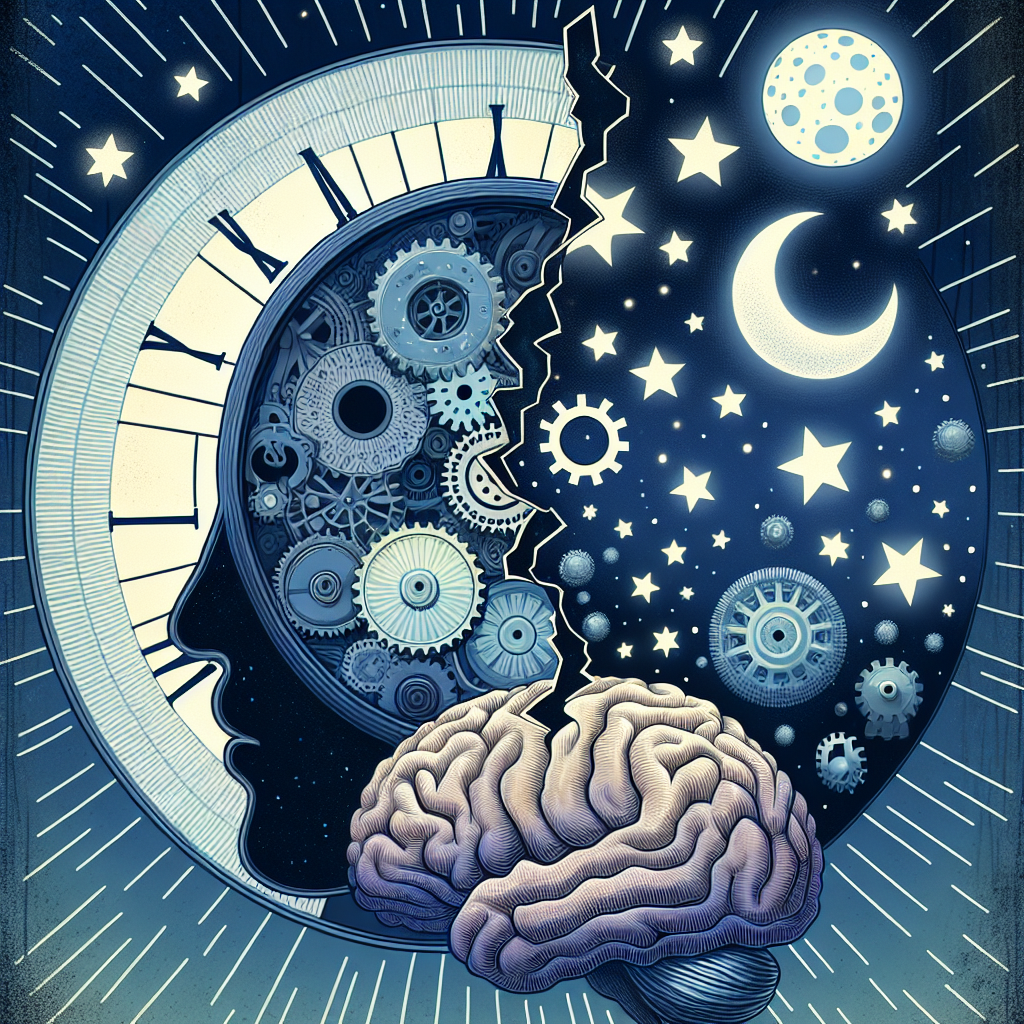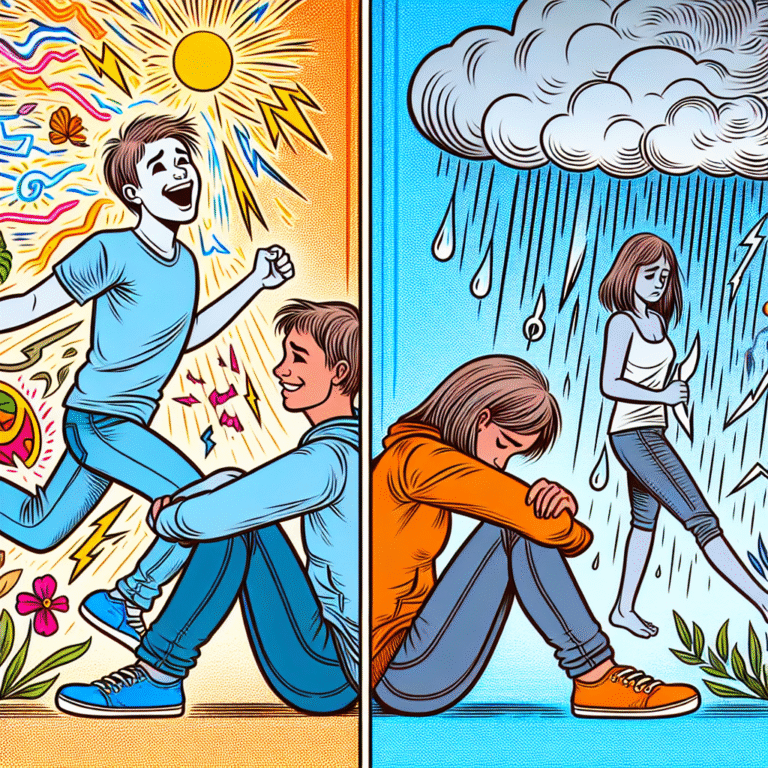
Breaking the Cycle: How CBT Can Revolutionize Your Sleep Patterns for Ultimate Restfulness
Introduction
In our fast-paced world, sleep often feels like a luxury rather than a necessity. Millions toss and turn every night, longing for the restorative slumber that seems just out of reach. If you’re among the countless individuals trapped in a cycle of sleeplessness, you may be wondering if there’s a way out. Enter Cognitive Behavioral Therapy (CBT), a profoundly effective approach that can help you break the cycle of disrupted sleep and restore your well-being. This article, "Breaking the Cycle: How CBT Can Revolutionize Your Sleep Patterns," will explore how this transformative tool can enable you to reclaim your nights and enhance your overall quality of life.
Once relegated to a clinical context, CBT is becoming increasingly recognized as a powerful ally against insomnia. By challenging the thoughts and behaviors that contribute to poor sleep, this therapeutic approach equips individuals with the skills to manage their insomnia effectively. Are you ready to embark on a journey toward uninterrupted sleep? Let’s delve into how CBT can revolutionize your sleep patterns.
Understanding the Sleep Crisis
The Prevalence of Insomnia
According to the American Sleep Association, approximately 30% of adults experience insomnia symptoms, with about 10% suffering from chronic insomnia. This staggering prevalence highlights the urgent need for effective interventions. Sleep is crucial for cognitive function, emotional regulation, and overall physical health, making it imperative to address sleep disparities.
The Cycle of Poor Sleep
Many individuals battling insomnia find themselves caught in a repetitive cycle. Thoughts about sleeplessness foster anxiety, which in turn triggers further sleep disturbances. Furthermore, poor sleep quality can lead to increased sensitivity to stress and emotional upheaval, creating a vicious cycle that seems insurmountable. Breaking this cycle is essential for mental and physical health, ultimately pointing us to the promise of Cognitive Behavioral Therapy.
What is Cognitive Behavioral Therapy?
Cognitive Behavioral Therapy, or CBT, is a structured, goal-oriented form of psychotherapy that focuses on the relationship between thoughts, feelings, and behaviors. Rather than merely addressing surface-level symptoms, CBT dives deep into the underlying cognitive patterns that influence behaviors—often those that lead to insomnia.
Key Principles of CBT
-
Cognitive Restructuring: This involves identifying and challenging distorted thinking patterns. For example, the belief that “I will never fall asleep” can amplify anxiety around sleep.
-
Behavioral Interventions: CBT includes practical strategies such as sleep restriction therapy and stimulus control techniques aimed at comporting your environment and routine to support better sleep.
-
Education: Understanding sleep hygiene and how our habits affect sleep can empower individuals to make informed changes.
- Mindfulness and Relaxation Techniques: These tools help address the racing thoughts that often accompany insomnia, promoting tranquility before bedtime.
Breaking the Cycle: How CBT Can Revolutionize Your Sleep Patterns
Case Study 1: Jane’s Journey to Restful Nights
Jane, a 34-year-old marketing manager, struggled with insomnia for over five years. Her nightly ritual included endless hours spent in bed, wrestling with her thoughts and frustration. After consulting with a therapist, she began a 6-week CBT program specifically tailored for insomnia.
Key Techniques Used:
- Sleep Restriction: Jane was advised to limit her time in bed to the actual hours she was sleeping, gradually increasing it as her sleep improved.
- Cognitive Restructuring: She learned to question her irrational thoughts surrounding sleep, which helped lessen her anxiety.
Results: Within weeks, Jane reported not only longer but also more restful sleep. Her experience underscores how breaking the cycle of negative sleep patterns through CBT can lead to a life transformed.
The Sleep Restriction Technique Explained
| Aspect | Traditional Approach | CBT Approach |
|---|---|---|
| Time in Bed | Increased to compensate for wakefulness | Restricted initially to build drive for sleep |
| Psychological Impact | Heightened frustration and anxiety | Reduced anxiety as sleep improves over time |
| Long-term Outcomes | Often leads back to same patterns | Develops consistent sleep habits |
Case Study 2: Mark’s Transformation
Mark, a 45-year-old IT consultant, found himself facing the unmistakable effects of sleep deprivation—irritability, lack of concentration, and deteriorating performance at work. He felt hopeless, caught in a loop of caffeine consumption and late-night screen time.
Upon enrolling in a CBT program, Mark learned:
- Stimulus Control: By restricting his bedroom activities to sleep and intimacy, he diminished the cues that previously signaled wakefulness in his room.
- Sleep Hygiene Education: Establishing a consistent sleep schedule and minimizing screen exposure at night transformed his pre-sleep routine.
Outcome: Within two months, Mark’s productivity soared, and his mood stabilized. His case highlights the effectiveness of cognitive and behavioral strategies in not only facilitating better sleep but also improving day-to-day functioning.
The Potency of Mindfulness and Relaxation Techniques
How They Fit Into CBT
Mindfulness practices and relaxation techniques are integral to CBT. These methods can significantly reduce pre-sleep anxiety and promote a sense of calm. Techniques include deep breathing exercises, guided imagery, and progressive muscle relaxation.
Conclusion
Breaking the cycle of poor sleep is not just a dream; it can become a tangible reality through Cognitive Behavioral Therapy. As we’ve explored, CBT offers a comprehensive suite of tools that address both the cognitive distortions and behavioral habits contributing to sleep disturbances. Real-life stories like those of Jane and Mark serve as testimonials to the transformative power of CBT in revolutionizing sleep patterns.
Encouragement lies in understanding that you possess the ability to reclaim your nights. By addressing and changing the thoughts and behaviors contributing to your struggles, you can move toward a healthier relationship with sleep. No matter how entrenched you feel in your current patterns, remember: CBT can help guide you through the darkness and into restful nights.
FAQs Section
1. What is Cognitive Behavioral Therapy (CBT)?
CBT is a structured, goal-oriented psychotherapy that focuses on identifying and changing negative thought patterns and behaviors.
2. How does CBT help with sleep disorders?
CBT helps by addressing the cognitive distortions surrounding sleep and introducing structured behavioral changes, ultimately fostering a better sleep environment and routine.
3. Is CBT effective for everyone?
While CBT has proven effective for many, individual results can vary. It is essential to consult with a trained professional to determine if it is the right fit for you.
4. How long does it take to notice improvements with CBT for sleep?
Many individuals report improvements within a few weeks of starting CBT, though full benefits may take several months to manifest.
5. Can I practice CBT techniques on my own?
Yes, several resources and guided materials are available. However, working with a trained therapist can provide personalized guidance and support.
By effectively implementing strategies centered around "Breaking the Cycle: How CBT Can Revolutionize Your Sleep Patterns," you can step into a world of restorative sleep that enhances your overall well-being. Are you ready to take the first step?















